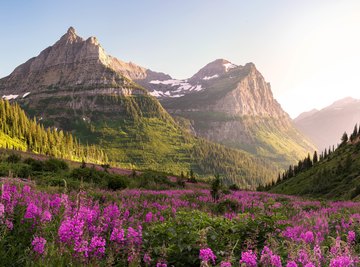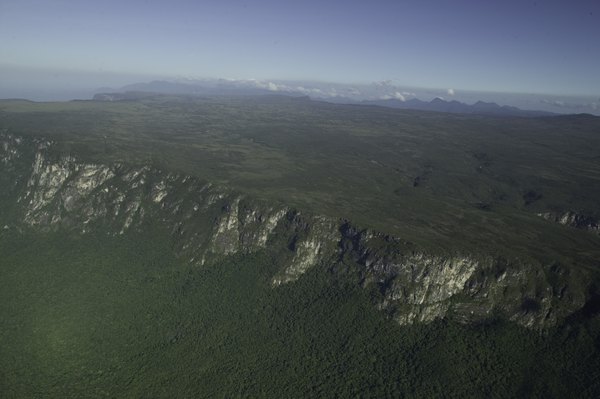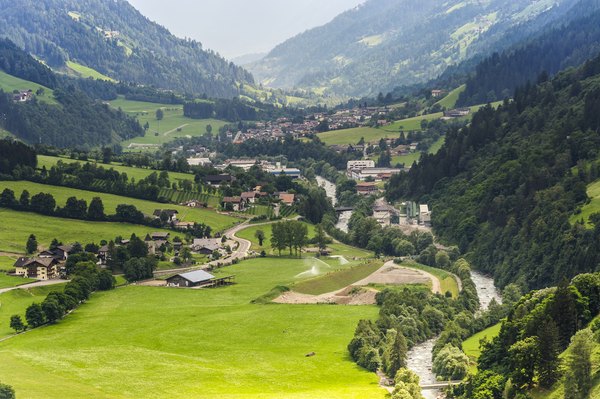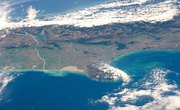
Earth's surface is geographically diverse, with a vast array of features punctuating its terrain. These features on the land's surface are known as landforms. There are at least eight different kinds of landforms, with four being considered major landforms. These major landforms are: mountains, plains, plateaus and hills.
TL;DR (Too Long; Didn't Read)
Earth's surface is punctuated by at least eight kinds of landforms, with four being considered major landforms. These major landforms are: mountains, plains, plateaus and hills. Each one is formed in a different way, and has its own distinct characteristics.
Major Landform 1: Mountains

Mountains are large landforms that rise high above surrounding terrain and usually form sharp peaks. Most mountains are formed by the movement of Earth's tectonic plates, called tectonic activity. Tectonic plates are massive slabs of rock that are present under continents and oceans. When two tectonic plates are pushed together for a long period of time, shards of crust are pushed upward, forming mountain ranges that span the distance of the line between the two tectonic plates. Scientists estimate that this process can take up to 100 million years.
Volcanic activity can also create mountains when magma from beneath Earth's crust erupts onto the surface. Over time, as the magma continues to erupt and cool over and over again, a large cone of rock forms. These kinds of mountains are usually called volcanoes and are given qualifiers that describe current activity, such as dormant or extinct.
Mount Everest is considered by many to be the highest mountain on earth, with a summit of 29,029 feet.
Major Landform 2: Plains

Plains are large, flat pieces of land with no drastic changes in elevation. Plains can be found at any altitude, though they are usually lower than the land surrounding them.
Plains usually form when sediment from taller landforms, such as mountains, erodes and washes downhill. Over time, the sediment builds up to create a large, flat plain. Lava from volcanoes can also form plains by cooling and drying in layers.
Many plains are grasslands, but some deserts and savannas are also considered plains, such as Africa's famous Serengeti.
Major Landform 3: Plateaus

A plateau is an elevated piece of land that, unlike a mountain, is flat. Plateaus can span vast distances, or they can be eroded into small elevated sections. These sections are called outliers, and they usually appear when rivers and streams continuously erode larger plateaus.
Plateaus usually form when two tectonic plates collide, causing a slow upward movement of land. Some plateaus, such as the Colorado Plateau in the United States, still rise by a measurable distance every year. Plateaus can also be formed by volcanic activity, when layers of lava cool and harden atop one another over time.
The world's largest plateau is the Tibetan Plateau, in central Asia. This plateau stretches across nearly 970,000 square miles.
Major Landform 4: Hills

Hills are elevated sections of land with notable summits that are lower and less steep than mountains. Most hills have "smoother" summits than mountains, meaning that their summits are not as severely pointed as mountaintops.
Hills are formed by the same type of tectonic activity that forms mountains. This activity, in which rocks shift upward due to colliding tectonic plates, is called faulting. Over long periods of time, faulting can turn hills into mountains. Mountains can also become hills over time, due to severe erosion.
Hills occur on every continent, in a variety of environments. Many parts of the world are famous for their rolling hills, including the highlands of Scotland and Tuscany, Italy.
References
About the Author
Maria Cook is a freelance and fiction writer from Indianapolis, Indiana. She holds an MFA in Creative Writing from Butler University in Indianapolis. She has written about science as it relates to eco-friendly practices, conservation and the environment for Green Matters.
